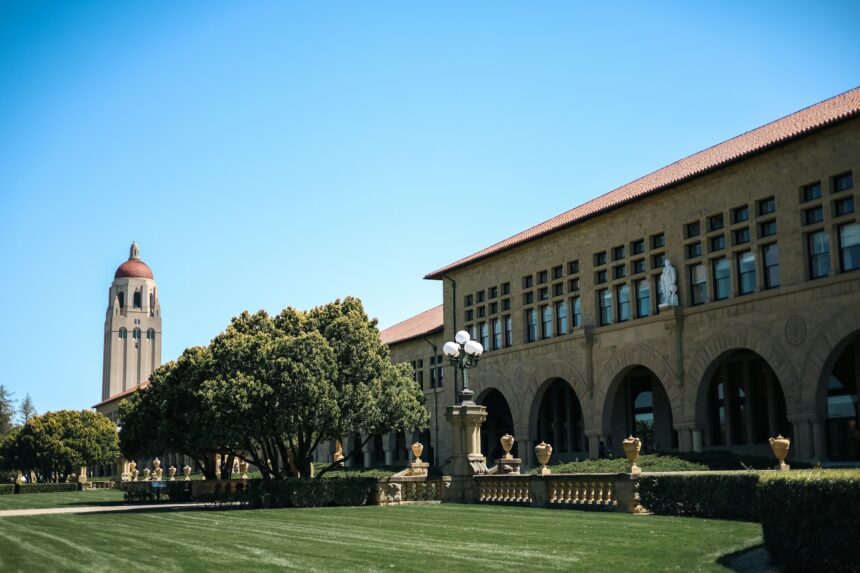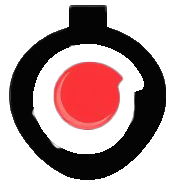Did you know that Stanford University can point to over 5,000 companies that have their roots at Stanford? That list includes favorite companies like Google, Nike, Apple, Amazon, Netflix, LinkedIn, Uber, IDEO, Intel, Oracle, Hewlett-Packard, Charles Schwab, Yahoo!, Gap, Tesla, even the Special Olympics. These companies generate annual global revenues of $2.7 trillion, an amount equivalent to the world’s tenth largest nation.
“The idea of starting your own business is everywhere at Stanford,” says Jason Hreha a Stanford behavioral science graduate. “Even outside of tech, the notion of building your own company is in the air. I would never have thought of starting my own business, if I had not gone to Stanford.” Hreha was global head of behavioral science at Walmart before he turned around and joined his Stanford college roommate Nathan Lomeli, and launched their AI-based staffing and recruiting firm, Persona.
“Entrepreneurship is in the air, it’s in the water, it’s everywhere,” nods Stanford professor Chuck Eesley, associate professor of Management Science and Engineering, part of Stanford Technology Ventures Program. “At Stanford, the way you show that you’re really smart and hip, is to say you’re building a company.”
Eesley knows. His course, “E145: Technology Entrepreneurship” is core to Stanford University’s startup world. No course prerequisites needed, so students from any major can hive and hypothesize how to build something that can predictively change the world.
But the Stanford method is not just that they offer courses in entrepreneurship. Stanford’s methodology has been maturing for over 100 years.
Origin story. Stanford abandoned conventional Eastern values when the University was founded by railroad tycoon Leland Stanford in 1885. The timing was right. By 1901, Guglielmo Marconi sent the first wireless Morse code signal over the Atlantic Ocean and inventors scrambled to build on Marconi’s success. (Later, developers scrambled to build apps after the iPhone was introduced.) In 1909, Federal Telegraph was founded in Palo Alto, where Lee de Forest invented the three-element vacuum tube. Three other Federal engineers formed Magnavox.
San Francisco’s radio engineering industry flourished through World War 2. After the war, Stanford University’s Research Park created a hybrid environment where industry innovators worked with students and faculty researchers. Back in Boston or New York City, this would have been considered conflict of interest. But not here.
“Engineers were dedicated to advancing the technology,” explains Chuck Eesley. “So, engineers would be willing to brainstorm with other engineers to help out.” Engineers helping other engineers inspired a culture that continues to this day.
“People who have worked at Google or Facebook work with students in figuring out how their companies might become viable,” remarks Eesley. “That spirit has continued in entrepreneurship and mentorship as well.”
The collaboration beats competition thinking paid out. In 1955, co-inventor of the transistor William Shockley founded Shockley Semiconductor Laboratory in Mountain View. Scientists from Shockley begat Fairchild Semiconductor Corp. Fairchild begat Intel Corporation. Intel begat the microprocessor—and the run was on.
The differences between West and East coast are stark.
“On the East coast, investors come from more of a banking or legal infrastructure,” explains Everett Cook of investment firm Pouschine Cook Capital Management. “They want empirical evidence. They want to know about past successes, rather than the future.”
Cook understands this from personal experience. When Cook launched his New York City-based investment firm, he received most of his funding from West Coast investors.
Zoom in. It’s not that Stanford University lets students rub noses with famous founders like Bill Gates, Jeff Bezos, Elon Musk, or that they created Design Thinking and have over 60 courses in innovation and entrepreneurship. Yes, they have all those things and more. But what differentiates Stanford University is open-minded access to capital provided by people with the specific boots-on-ground expertise that entrepreneurs need to succeed.
The sequence goes something like this. Identify the customer or social need, ideate solutions, locate funding, attract appropriate mentors, launch, then create a successful company build.
Example. Sanas.ai founders Max Serebryakov and Shawn Zhang were students in Chuck Eesley’s class. They presented their idea during final class pitches—a software algorithm that modifies foreign-language accents on digital devices in real time. But they were not interested in following up on their class project. However, sitting in the audience was an investor from DN Capital who was excited by their presentation. Steve Schlenker was educated at Wharton and Harvard. He moved from the East Coast to Palo Alto a decade ago to spot exciting ideas that require seed capital. Today, Schlenker has an office right on the Stanford University campus.
Serebryakov and Zhang had discovered an algorithmic white space, Schlenker spotted. Instead of changing a voice to an Australian or British accent like Siri (or making your voice sound like Daffy Duck), the technology could remove the speaker’s accent in real time and give them perfect-sounding English. This would instantly improve comprehension and reduce bias.
Schlenker confronted the team. “Why don’t you do this idea?” he urged. Serebryakov and Zhang were both graduating and had juicy jobs lined up. Their response was, “Where would we get the money?”
“Well, I happen to have invested in Shazam! [a music recognition app sold to Apple],” Steve Schlenker replied. “I know one of the original founders who built their digital fingerprint technology. Let me introduce you to him.”
Serebryakov and Zhang were introduced, and the Shazam! engineer invested.
“Then I introduced them to the head of worldwide operations for Airbnb. And she put in some money,” continues Schlenker. “Then I introduced them to someone who had founded a call center, and he put in some money. I put in some money. All of a sudden, they had seed capital.”
So far, over $50 million has been invested in Sanas.ai. But money isn’t everything. Importantly, the students are connected to four champion entrepreneurs who have expertise in the technologies and operations that Sanas.ai needs to win.
“Having networks of technical expertise at the investor level helps companies pivot and course correct quickly, which is more time effective,” chimes Chuck Eesley. “You don’t waste weeks waiting to identify the problem or waiting for new hires.”
“That—” Steve Schlenker pauses for effect. “That doesn’t exist anywhere but in Silicon Valley.”
Open access to capital—plus open doors to other successful founders is the Stanford University method that puts Stanford startups ahead of other incubators, accelerators, or lean startups in Boston, Austin, Brooklyn, Silicon Alley, London, Lisbon, Tel Aviv, Berlin, Shanghai or anywhere.
Exclaims Steve Schlenker, “It is what makes Silicon Valley number one in the world!”
Contributed to Branding Strategy Insider by: Patrick Hanlon, Author of Primal Branding
The Blake Project Can Help Your Startup Win The Future In The Brand Strategy Workshop For Startups
Branding Strategy Insider is a service of The Blake Project: A strategic brand consultancy specializing in Brand Research, Brand Strategy, Brand Growth and Brand Education
FREE Publications And Resources For Marketers
Post Views: 35









